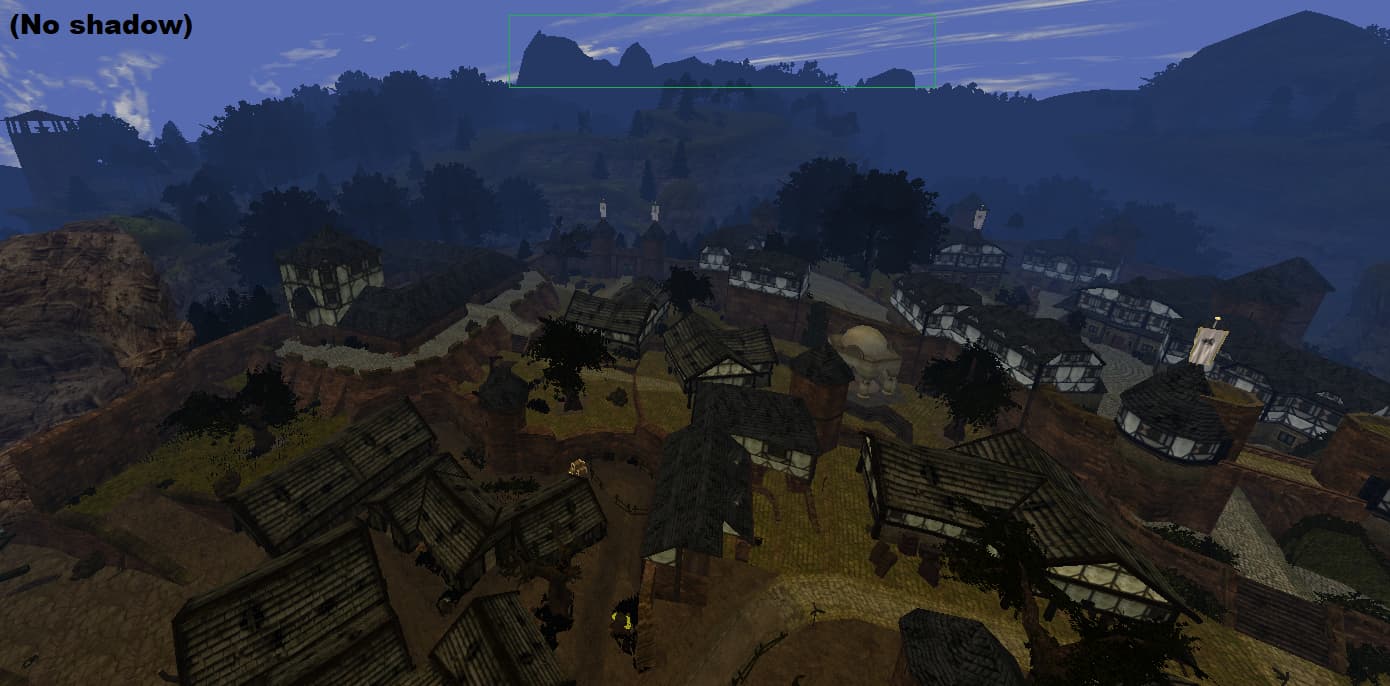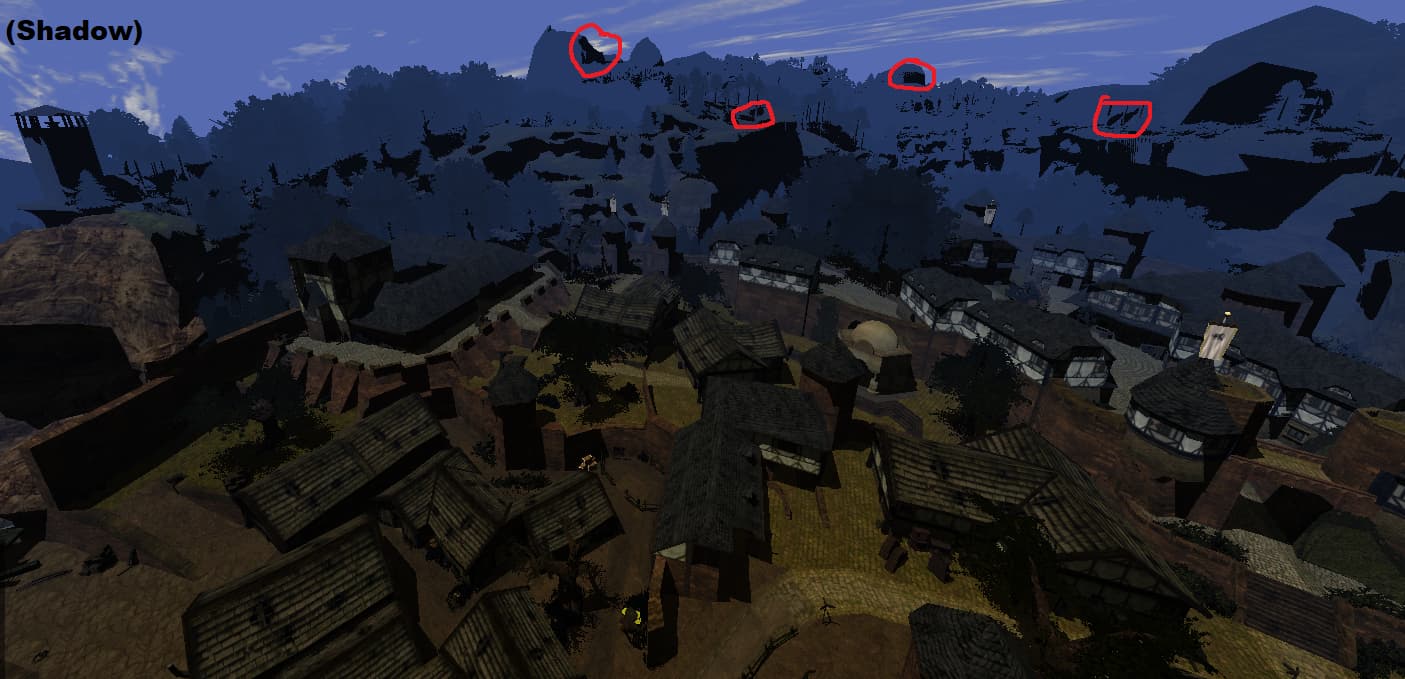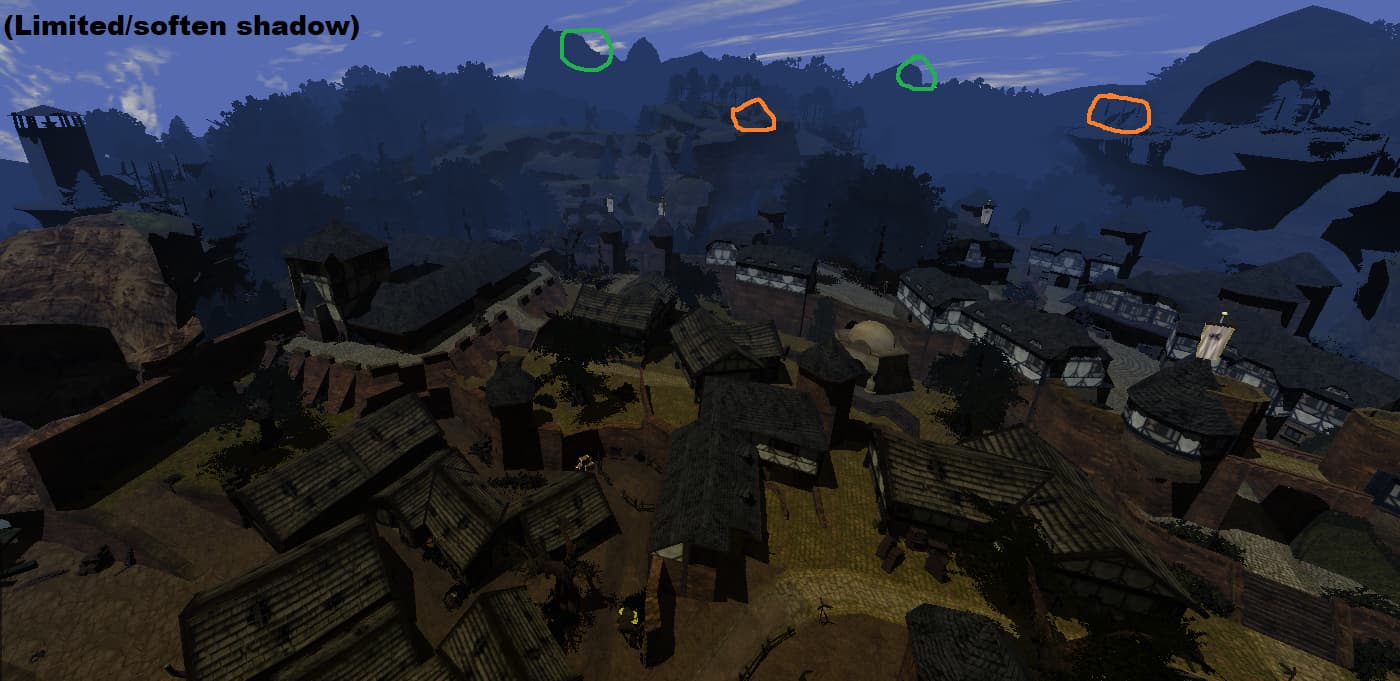Hi,
I’m using fog shader, and I want areas that are far from camera to be 100% covered with the fog, like this:
(as you can see - the mountains at the background are entirely “blue”, which is the color of the fog)
Now when I’m adding shadow:
var dlsr = new DirectionalLightShadowRenderer(assetManager, SHADOWMAP_SIZE, NO_MAPS);
dlsr.setLight(light);
dlsr.setLambda(0.75f);
dlsr.setShadowIntensity(0.8f);
dlsr.setEdgeFilteringMode(EdgeFilteringMode.Nearest);
this is how it looks:
the fog effect looks bad, as the shadow divides the foggy area into shaded vs lighted. The shadows should not be visible on mountain, as you wouldn’t be able to see mountain from behind the fog.
I tried to mitigate the issue by limiting the area of shadow calculations:
dlsr.setShadowZExtend(200);
and by softening the shadows as they are close to the border of shadow-related area:
dlsr.setShadowZFadeLength(100);
and I can see some improvement:
However, this is still not perfect.
I would be grateful for some advice.
I also tried DirectionalLightShadowFilter as opposed to Shadow Renderer, with the same result.
What I believe would be a perfect solution, is to have things calculated in appropriate order, that is: first calculate the shadows, then calculate the fog. I cannot find the shadow function in the Lightning.frag though. I read on wiki that the Shadow Filter is some post-processing, but I hoped that maybe the Shadow Renderer is inside the shader, so that I could maybe move things around in the GLSL?
I did some test: covered entire area with 100% intensity fog (set that in the shader), and the shadow were still there, so it seems shadows are calculated later, after the fog.
I know that there is a fog filter in jME, perhaps that works better together with the shadows. I haven’t tried it yet. In general, I tweaked the jME shader fog on GLSL level to suit my needs, so I would like to be able to use that, without needing to switch to another fog mechanism.


